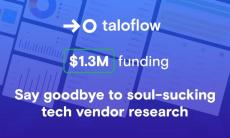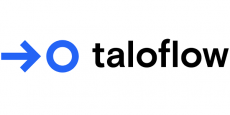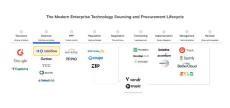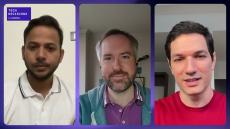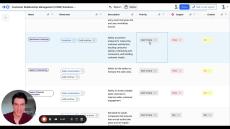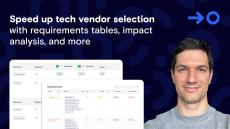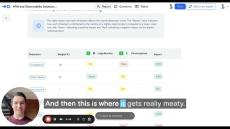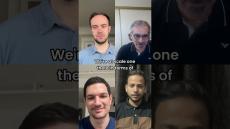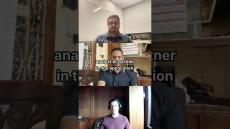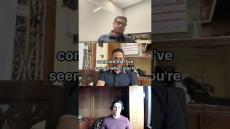|
By Taloflow
This is a vendor guest post authored by the team at Lytix. Lytix being discussed on this blog is not an endorsement by Taloflow or an approval by Taloflow of any of the content contained herein. Taloflow is not compensated for this vendor guest post in any way and presents this post for purely informational purposes and the benefit of site users.
|
By Taloflow
Taloflow, a Y Combinator W21-batch company, has raised $1.3 million in funding. This investment comes from Wonder Ventures, First Check Ventures, and many notable founders, including the founders of PEER 1, Sacra, and Hootsuite, who share our vision for software vendor selection. Today also marks the launch of our collaborative AI notebook – two years in the making – which automates the research to evaluate tech vendor capabilities for any use case in dozens of B2B categories.
|
By Taloflow
Stakeholder analysis in software selection involves a systematic approach to identifying, analyzing, and managing the needs and expectations of stakeholders. Engaging diverse stakeholders, including end-users, IT staff, and executive sponsors, is crucial during the software selection process. This ensures a comprehensive understanding of requirements and impact.
|
By Taloflow
Analytic Hierarchy Process (AHP) and Analytic Network Process (ANP) are two decision-making frameworks used to solve complex problems where multiple criteria must be considered. Let's explore each of these methods in detail and how they can be applied to complex software evaluations.
|
By Taloflow
Node Analysis and Scenario Planning are invaluable tools for strategic software selection. They empower organizations to anticipate and prepare for a multitude of future scenarios and their potential impacts. When it comes to selecting a software vendor, these approaches enable organizations to comprehensively assess a wide range of possible futures and evaluate the performance of each software vendor's solution under various conditions.
|
By Taloflow
Portfolio Analysis is a strategic process that evaluates potential software vendors in a business investment portfolio. This method assesses risk and potential returns by considering factors such as vendor stability, technological maturity, and alignment with the organization's strategic goals. By implementing Portfolio Analysis in software vendor selection, organizations can optimize their overall software portfolio.
|
By Taloflow
Real Options Analysis (ROA) is a decision-making approach that originated in financial management but has since been applied in various fields, including technology and software vendor selection. ROA focuses on assessing the value of maintaining flexibility in decision-making under uncertainty.
|
By Taloflow
When faced with complex software selection choices, navigating the numerous factors involved can be difficult. That's where Multi-Criteria Decision Analysis (MCDA) and Decision Matrix Analysis (DMA) come into play. Both methods provide structured and transparent approaches to evaluating options, but they differ in complexity and suitability for different types of decisions.
|
By Taloflow
Sigh...in the blink of an eye, AWS now has hundreds of thousands of SKUs, 180 different types of services, 17 different ways to launch a container, and has dozens upon dozens of regions and availability zones. No wonder AWS billing has become so complex to understand. Is there a fix?
|
By Taloflow
I’m LV, co-founder and CEO of Taloflow, a technology selection platform built for the AI productivity era. I’ve spent more than a year interviewing over 200 enterprise IT procurement professionals and IT and Engineering decision-makers and have found that the space of software selection and procurement is undergoing a sea change in expectations. Based on the interviews, I’ve determined nine steps in the software procurement lifecycle, but these are more fluid than ever.
|
By Taloflow
Hosted by: Louis-Victor Jadavji and Abhishek Singh from Taloflow Guests: Gopinath Balakrishnan from Google, Todd Kesselman from Taloflow.
|
By Taloflow
In this episode, the hosts and guest discuss the importance of data security posture management (DSPM) and its role in protecting sensitive data. They explore the evolution of the cybersecurity and data security market over the years, highlighting the challenges and advancements in securing data in cloud environments. The conversation also touches on the vendor landscape, the complexity of selecting security tools, and the need for organizations to invest in data security. The key takeaways include the overwhelming number of security tools available, the importance of aligning security goals with business risks, and the impact of regulations on data security.
|
By Taloflow
In this video, Louis-Victor Jadavji, Taloflow's co-founder and CEO, presents the latest changes at Taloflow for the first quarter of 2024, including: Taloflow Q1 2024 Feature Updates Transcript=== Louis-Victor Jadavji: Hey, it's LV here from Taloflow, and I'm looking forward to showing you today, our latest features to accelerate your software vendor decisions. Whether it's in iPaaS, APM, CRM, observability, you name it. We probably have it. And if not, we'll add it soon enough at your request. So let's dive in.
|
By Taloflow
Louis-Victor Jadavji, CEO at Taloflow, presents the decision factor analysis feature to streamline the software selection process.
|
By Taloflow
In this episode, the hosts discuss cloud cost management with guest Micah Wheat, co-founder of Dashdive. They explore the formation of Dashdive and the changes in the market that have made cloud cost management more important. They also discuss the use of arbitraging tools and the challenges of amortizing costs and pricing models. The conversation covers the differences between cloud cost observability and cloud cost management and the importance of granularity in cost attribution.
|
By Taloflow
Hosted by: Louis-Victor Jadavji and Abhishek Singh from Taloflow Guests: Micah Wheat from Dashdive, Todd Kesselman from Taloflow.
|
By Taloflow
Hosted by: Louis-Victor Jadavji and Abhishek Singh from Taloflow Guests: Micah Wheat from Dashdive, Todd Kesselman from Taloflow.
- July 2024 (1)
- June 2024 (1)
- May 2024 (1)
- April 2024 (2)
- March 2024 (1)
- February 2024 (9)
- January 2024 (8)
- December 2023 (1)
- August 2023 (1)
- May 2023 (2)
- April 2022 (2)
- March 2022 (1)
- December 2021 (1)
- October 2021 (2)
- September 2021 (1)
- July 2021 (1)
- June 2021 (1)
- February 2021 (1)
- July 2020 (1)
- June 2020 (1)
- May 2020 (1)
- December 2019 (1)
- August 2019 (1)
- May 2019 (1)
- January 2019 (1)
- November 2018 (2)
- October 2018 (1)
- June 2017 (1)
The easiest way to manage AWS costs. Taloflow analyzes and forecasts AWS costs in real-time so you can get ahead of anything that would rack up the AWS bill.
Help your devs work efficiently. Link your cloud billing, deployments, and business activity to get a deep understanding of AWS costs. No complex alert rules, tagging, or maintenance required. Comes with the option to outsource your AWS cost management work to our expert team.
Loved by SRE, DevOps and FinOps:
- 10x Faster Than Cost Explorer: With Slack and email alerts based on real-time forecasts and trend-spotting, Taloflow is the fastest way to spot cost spikes on AWS. Never again wait days or weeks to mitigate AWS cost incidents and drastically improve your MTTR.
- Investigate What Matters: Taloflow uses machine learning to reduce alert noise and false positives. You don't need to manage pesky budgets, alert rules, or billing alarms. Drill down to the resource and operation causing headaches.
- Understand Your Costs Without Tagging: Marginal analysis of cloud costs gives you a deeper understanding of cloud costs by mapping them to business and deployment activity with our API. Reveal the “why” behind your cost structure.
Cut AWS costs in half and free up months of engineering and finance work.



